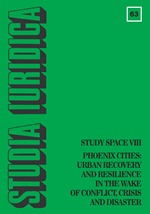Laws Regarding Controversial Cultural Heritage
in South Africa and the United States: Public Monuments and Street Names
Laws Regarding Controversial Cultural Heritage
in South Africa and the United States: Public Monuments and Street Names
Author(s): Ryan Rowberry, Gordon PirieSubject(s): Social Sciences, Law, Constitution, Jurisprudence, Sociology, Rural and urban sociology
Published by: Wydawnictwa Uniwersytetu Warszawskiego
Keywords: memorials; street names; cultural heritage; apartheid; slavery; racial inequality
Summary/Abstract: Targeting cultural heritage to buttress new political and social aims is an ancient, and unfortunately, omnipresent practice among authoritarian regimes. Pharaohs’ excised the names of predecessors (and carved their own) on Egyptian obelisk cartouches; King Edward I of England captured and transported the Stone of Scone – Scotland’s coronation stone – to Westminster Abbey in 1296; Chairman Mao’s ‘Great Leap Forward’ led to the wholesale destruction of Chinese feudal culture in the mid-20th century; the Nazis methodically bombed and bulldozed over 90% of Warsaw’s historic Old Town; and the Islamic State (ISIS) recently demolished the tomb of the biblical prophet, Jonah, in Iraq. Calculated removal of cultural heritage, however, is also a modern widespread concern in representative governments like South Africa and the United States. This is particularly true when historic monuments and street names highlight controversial chapters of the past, like slavery and racial inequality. Monuments and street names that some associate with slavery and racial inequality are significant threads that delineate and reinforce a distinct cultural narrative of identity and importance across many urban tapestries in South Africa and the United States. But the laws for protecting or removing controversial monuments and street names in these two countries has received little attention. This article will, therefore, examine and compare the legal frameworks for protecting or removing controversial historic monuments and renaming controversial streets in South Africa and the United States. It also offers some brief concluding remarks about the risks of removing controversial cultural heritage.
Journal: Studia Iuridica
- Issue Year: 2016
- Issue No: 63
- Page Range: 263-283
- Page Count: 21
- Language: English

